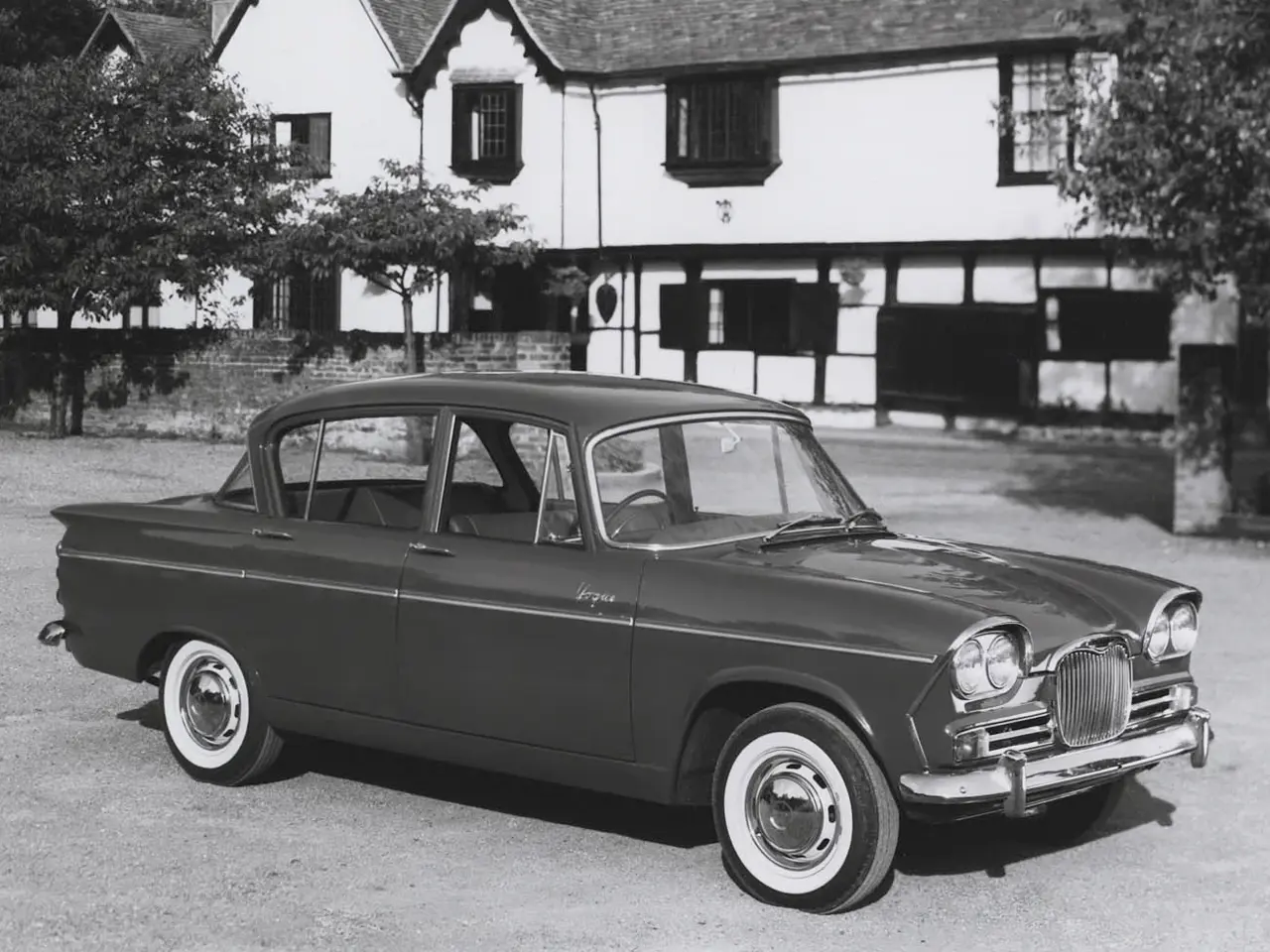THE SINGER VOGUE AT SIXTY
12 August 2021
This month sees the 60th anniversary of a car that never professed to offer the excitement of a Jaguar E-Type or a Mini Cooper – yet was a vital aspect of British motoring of the late Macmillan era. A new Vogue was the perfect choice for the motorist who regarded the Ford Consul Classic as only fit for wide boys, the Wolseley 16/60 as too middle-aged and the Vauxhall Victor FB De Luxe as too Spartan
The Rootes Group acquired the Singer company in 1956, and by the end of the decade, the marque occupied a distinct niche in their Audax range. The Gazelle was less flamboyant than the Sunbeam Rapier - but was also more opulent than a Hillman Minx. Ryton originally planned for their medium-sized cars to be replaced by a new range but they eventually decided the two line-ups would co-exist.

And so the Vogue debuted in July 1961, followed by its Hillman Super Minx stablemate in October of that year. As befitting a car bearing the Singer badge, there was a folding armrest on the front bench seat, an ammeter and oil pressure gauge and a choice of tasteful duotone paint finishes. Best of all, there were quad Lucas headlamps so the driver could better cope with the rigours of the Motorway Age.
The price of such comfort was a not unreasonable £956 8s 11s; to quote Autocar, ‘For those in search of a touch of luxury in a car of compact dimensions, the Vogue is a thoroughly satisfactory answer. For those searching for more performance, Laycock overdrive was another £61 19s 7d, and for those who wished to induce envy in Standard Ensign drivers, whitewall tyres cost just £8 7s 8d.
Meanwhile, the chaps at Motor Sport noted ‘the whole conception of the Singer Vogue is of a small luxury car, a sort of poor person’s Humber’. They praised how ‘All four doors open at right angles for dignified entry’ but thought the front wings ‘appear to have mumps’. However, ‘Rootes are to be congratulated on offering a very honest, typically British small luxury car at a decidedly modest and competitive price’.
May 1962 saw the launch of the Estate – ‘loaded with luxury features’. The Singer gave Rootes a useful market contender as BMC did not offer the “Farina” station wagon in Wolseley, MG or Riley forms. By 1963 the Series II was equipped with front disc brakes and reversing lamps. Late 1964 saw the Vogue Series III and its Hillman counterpart gain very appealing “six-light” styling - losing their quasi-late-1950s-Detriot wraparound rear screen. The Vogue’s specification now included reclining front seats, a fitting welcomed by most drivers
In October 1965, the Series IV boasted a 1,725cc engine in place of the familiar 1,592cc unit. A year later, Rootes unveiled the latest Singer-badged version of their “Arrow Series” - which built on the reputation of their predecessor. For an insight into the world of the typical Vogue family, look no further than a Public Information Film entitled Turning Right; tea on the lawn, well-tended flower beds and gossiping about the neighbours.
Why choose Lancaster Insurance?
Here at Lancaster, we love classic cars as much as you do and we understand what it takes to protect them for future generations.
We have links with some of the top classic car clubs around the country and some of our policies even offer discounts of up to 25% for club members.
Other benefits of classic car insurance through Lancaster can include:
- Historic rally cover
- Static show cover
- Limited mileage discounts
- Choice of repairer
- 24-hour claims helpline
Give your classic the protection it deserves and get a quote for your classic today.
